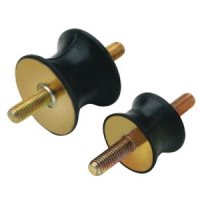If you use an HV BEC to power the Pixhawk, then you will lose the battery voltage and current draw data. Unless, you set up a voltage divider, which is very easy to do, and is what I do on most of my aircraft. That gets you voltage. I just don't worry about current normally. It really doesn't concern me much. But, even that can be done if you really want. I can build a current sensor that will be good for unlimited voltage, and 100A current, with exactly ZERO resistance, and ZERO chance of failure, if somebody wants.
I'm not saying to not balance the props. What I'm saying is that there's a point of diminishing returns. And also too much focus on prop balance while ignoring other issues that affect the image is problematic. I've seen many cases where people spend lots of time balancing props, but still get vibration soon as they are actually flying. They probably think they need to spend even more time balancing, but that's not the problem. The problem is, as I've said many times, that aerodynamic forces, namely disymmetry of lift, will cause even the best balanced prop to vibrate anyway. You can't stop it, unless you went to a complicated articulated rotor, which nobody is doing. Therefore, you must have an effective vibration damping system for the camera. If this system is effective for the aerodynamic vibrations, then it will also be effective at eliminating the remaining minor vibes coming from a prop that hasn't had hours spent balancing.
Yes, I know many of the concepts I present are revolutionary, but it's because I come at this from a firm grasp of science and engineering, and usually backed by data. Too much of this industry relies on a black-magic mindset.
I've seen several situations where people have crashed, because they spent so much time balancing props and motors, got everything perfect, no vibes. So they hard mount the Pixhawk. And then they actually go outside, and fly at 10m/s, and the thing starts shaking like hell, and crashes, and they can't understand why.

